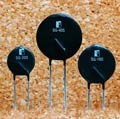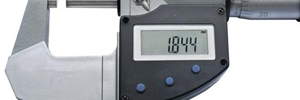The purpose of circuit protection
Circuit protection is the intentional installations of weak links comprised of electrical components or fuse, it’s primary purpose of protecting wires, and other electric components from voltage spikes and power overloads. Sudden electrical surges, overloaded power outlets and lighting storms can produce voltage fluctuations or irregularities, which then can cause damage to electrical equipment and appliances. Furthermore this can lead to hazardous situations, this could create environments that are likely for fire. Circuit protections aims to solve this problem by cutting off the current running through the wires and electric components if a power surge or overloads occur. Nowadays, there are different forms of circuit protection available from outlets such as https://www.rhopointcomponents.com/.
and power overloads. Sudden electrical surges, overloaded power outlets and lighting storms can produce voltage fluctuations or irregularities, which then can cause damage to electrical equipment and appliances. Furthermore this can lead to hazardous situations, this could create environments that are likely for fire. Circuit protections aims to solve this problem by cutting off the current running through the wires and electric components if a power surge or overloads occur. Nowadays, there are different forms of circuit protection available from outlets such as https://www.rhopointcomponents.com/.
Likely components used
The fuse is the first and most common form of circuit protection. A fuse is usually placed around the beginning of a functioning running electrical current. When there is a surge of power, the fuse heats up. If the surge reaches a certain level, it will eventually melt the fuse; thereby cutting the electric current. While fuses are able to protect your appliances and electrical components from severe electrical surges, it’s a one time use. After the fuse burns out, you will have to replace it. If you don’t have a replacement, then power is unavailable as the fuse forms a bridge between to wires or electrical component. It’s the reason why the fuse is not advisable in buildings and facilities that require a constant flow of electricity. An example of this is medical buildings and computer labs. As a solution, circuit breakers was invented.
Common setups
At its core, a circuit breaker is a setup that is composed of multiple fuses or components. The available components have a wide range from your standard fuse to Miniature Circuit Breaker (MCB), Residual Current Device (RCD) or Residual Current Breaker with Overload protection (RCBO). Circuit breakers can have an elaborate setup depending on the needs of the user. However, the fundamental function is still the same. Nowadays, there are other forms of circuit protection widely available aside from the original fuse and circuit breakers. No matter the kind of setup or technology, the circuit protection still has one purpose; and that’s to protect the end user first and then electrical components and wires from a power surge and irregular voltage.
